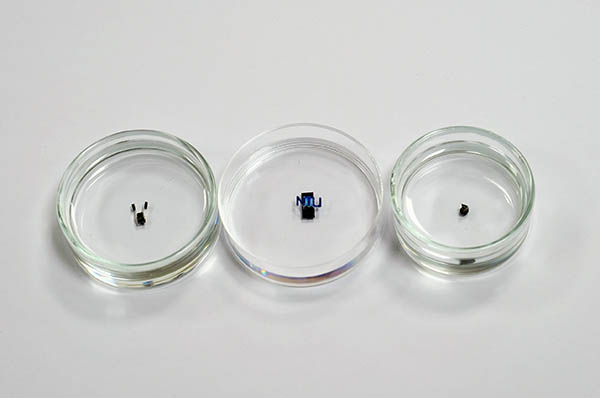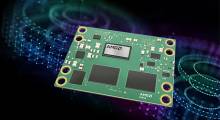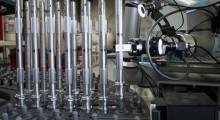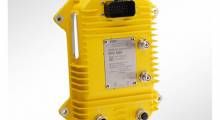Researchers at Nanyang Technological University in Singapore have developed millimeter-sized robots that can be controlled using magnetic fields to perform highly maneuverable and dexterous manipulations. This could enable applications in biomedicine and manufacturing, they said this week.
The team of scientists created the miniature robots by embedding magnetic microparticles into biocompatible polymers—non-toxic materials that are harmless to humans. The robots are “programmed” to execute their desired functionalities when magnetic fields are applied.
The robots improve on many existing small-scale robots by optimizing their ability to move in six degrees of freedom (DoF), said Nanyang Technological University (NTU). It defined six DoF as translational movement along the three spatial axes, and rotational movement about those three axes, commonly known as roll, pitch and yaw angles.
While researchers have previously created six DoF miniature robots, the new NTU miniature robots can rotate 43 times faster than them in the critical sixth DoF when their orientation is precisely controlled. They can also be made with soft materials and thus can replicate important mechanical qualities—one type can swim like a jellyfish, and another has a gripping ability that can precisely pick and place small objects.
The research by the NTU team was published in the peer-reviewed scientific journal Advanced Materials last month and is featured as the front cover of the June 10 issue.
Magnetic breakthrough
Lum Guo Zhan, lead author of the study and assistant professor at NTU's School of Mechanical and Aerospace Engineering, said the team made the crucial discovery of an “elusive” third and final principal vector of these magnetic fields, which is critical for controlling such machines.
By contrast, previous works had defined the applied magnetic fields in terms of two principal vectors.
“My team sought to uncover the fundamental working principles of miniature robots that have six-DoF motions through this work,” explained Lum. “By fully understanding the physics of these miniature robots, we are now able to accurately control their motions.”
“Furthermore, our proposed fabrication method can magnetize these robots to produce 51 to 297 folds larger six-DoF torques than other existing devices,” he said. “Our findings are therefore pivotal, and they represent a significant advancement for small-scale robotic technologies.”
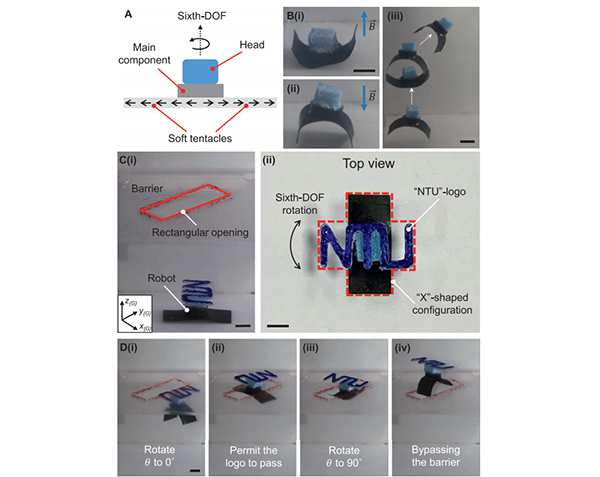
Robots suitable for surgical, manufacturing use
Measuring about the size of a grain of rice, the miniature robots may be used to reach confined and enclosed spaces currently inaccessible to existing robots, said the NTU team, making them particularly useful in medicine.
The movements of the robots can be controlled remotely by an operator, using a programme running on a control computer that precisely varies the strength and direction of magnetic fields generated by an electromagnetic coil system.
The tiny devices could also inspire novel surgical procedures for difficult-to-reach vital organs such as the brain in future, the NTU team said. However, more work and testing needs to be done before the robots can be deployed for such targeted applications, it said.
“Besides surgery, our robots may also be of value in biomedical applications such as assembling lab-on-chip devices that can be used for clinical diagnostics by integrating several laboratory processes on a single chip,” said Xu Changyu and Yang Zilin, co-authors of the research and Ph.D. students at the School of Mechanical and Aerospace Engineering.
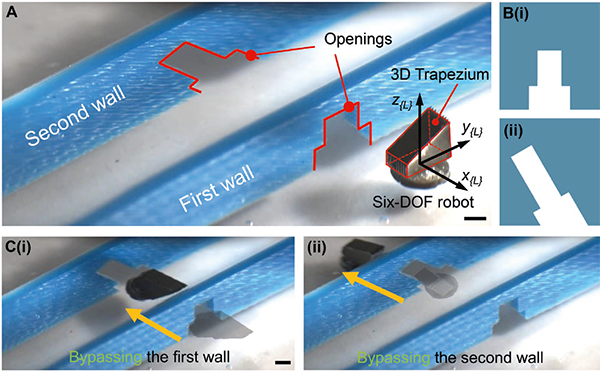
NTU robots swim through barriers, assemble structures
In lab experiments, the research team demonstrated the dexterity and speed of the miniature robots.
Using a jellyfish-inspired robot, the NTU team showed how it was able to swim speedily through a tight opening in a barrier when suspended in water. This demonstration suggested that these robots were able to negotiate barriers in dynamic and uncertain environments such as human organs.
Demonstrating precise orientation control, the robots also achieved a rotation speed of 173 degrees per second for their sixth DoF motion, exceeding the fastest rotation that existing miniature robots have achieved, which is four degrees per second for their sixth DoF motion.
With the gripper robot, the scientists were able to assemble a 3D structure consisting of a bar sitting atop two Y-shaped stilts in less than five minutes, about 20 times faster than existing miniature robots have been able to do. This proof of concept shows that such robots could someday be used in “micro factories” to manufacture microscale devices, they said.
The NTU team is now looking to make its robots even smaller, on the scale of a few hundred micrometers, and to ultimately make the robots fully autonomous.
Article topics
Email Sign Up

